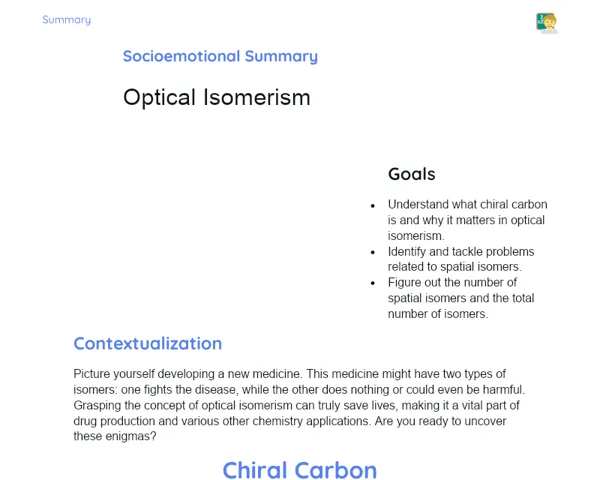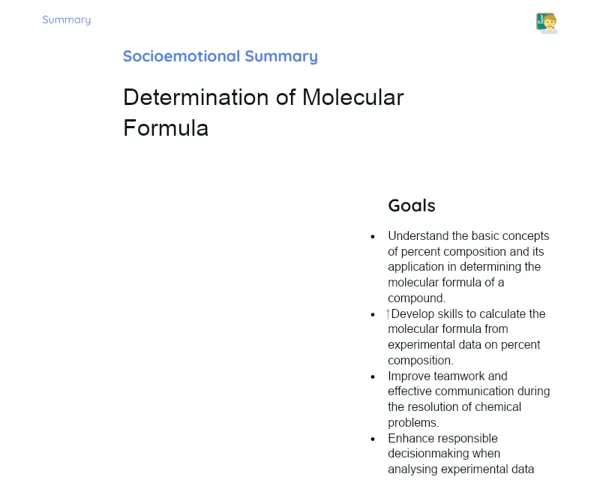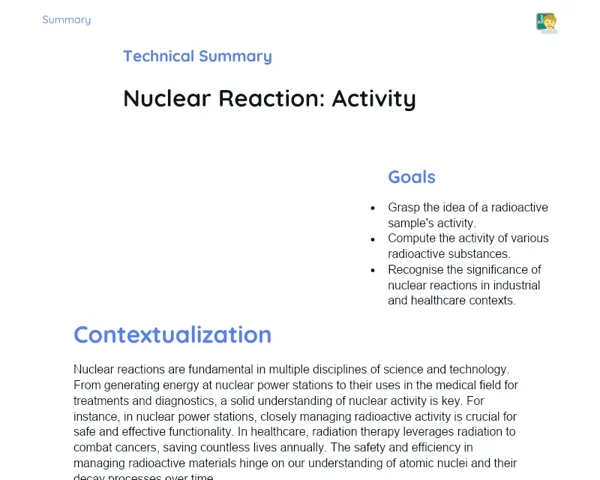Goals
1. Understand molarity as the ratio of moles of solute to the volume of the solution.
2. Learn how to calculate the molarity of a solution based on given data.
3. Recognise the importance of molarity in various fields, such as pharmaceuticals and the food industry.
4. Get to grips with the units of measurement used in molarity calculations.
Contextualization
Molarity is a crucial measure in chemistry that helps us comprehend the concentration of solutions. Think of it as preparing medication where getting the right amount of active ingredient is vital for its effectiveness and safety. Knowing how to calculate molarity ensures that the solutions we prepare have the exact concentration necessary to avoid errors that could lead to serious issues. Furthermore, molarity is an essential concept across different scientific and industrial sectors, from food production to the creation of new materials.
Subject Relevance
To Remember!
Definition of Molarity
Molarity (M) is a measure of concentration indicating the amount of solute, expressed in moles, per litre of solution. It's one of the most prevalent ways to express solution concentration in chemistry, especially in lab and industrial settings.
-
Molarity is defined as the ratio of moles of solute to the volume of solution in litres.
-
The formula for calculating molarity is M = n / V, where 'n' represents the number of moles of solute, and 'V' is the volume of solution in litres.
-
Molarity is vital for preparing solutions with accurate concentrations, essential for various scientific and industrial applications.
Calculating Molarity
To determine molarity, it's important to know both the amount of solute (in moles) and the solution volume (in litres). Molarity can then be calculated by dividing the moles of solute by the solution's volume.
-
First, find the mass of the solute and convert this to moles using the compound's molar mass.
-
Next, measure the volume of the solution in litres.
-
Finally, apply the formula M = n / V to calculate the molarity.
Units of Measurement
Units of measurement are essential for expressing molarity accurately. The most widespread units are 'mol' for the amount of substance and 'litre' for the volume of the solution.
-
The mole is the SI unit for the amount of a substance.
-
The litre is the volume unit used for solutions in chemistry.
-
Accuracy in measuring both mass and volume is critical for correct molarity calculations.
Practical Applications
-
Pharmaceutical Industry: Molarity is crucial for preparing medications with precise dosages to ensure safety and efficacy.
-
Food Industry: Molarity is key for controlling the concentration of preservatives and other additives in foods and beverages.
-
Biotechnology: Solutions of varying molarities are commonly utilised in laboratory techniques.
Key Terms
-
Molarity: The concentration of a solution defined by the number of moles of solute per liter of solution.
-
Mole: The SI unit for measuring the amount of a substance.
-
Volume: The amount of space a substance occupies, measured in litres when dealing with solutions.
Questions for Reflections
-
How does precision in measuring molarity influence the quality and safety of pharmaceutical products?
-
What could be the repercussions of an error in calculating molarity during food production?
-
In what other fields of science and industry can knowledge of molarity be applied?
Practical Challenge: Preparing Solutions with Precision
This mini-challenge is designed to reinforce students' understanding of how to calculate and prepare solutions with a specific molarity.
Instructions
-
Form groups of 3 to 4 students.
-
Each group needs to calculate the necessary amount of solute to make 100 mL of a 0.5 M NaCl solution.
-
Use a precision scale to weigh the solute, then dissolve it in distilled water until you reach 100 mL.
-
Confirm the molarity of the solution you've prepared.
-
Document your calculations and the preparation steps of the solution.



